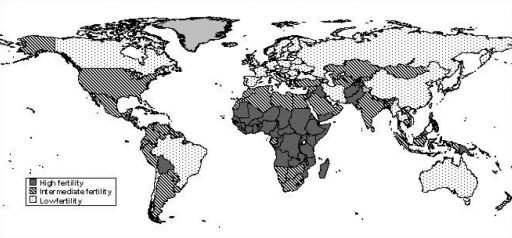World Population to reach 10 billion by 2100, with average life expectancy of 81: UN
May 4, 2011
The United Nations projects that the current world population of close to 7 billion will reach 10.1 billion in the next ninety years, reaching 9.3 billion by the middle of this century, according to the medium variant of the 2010 Revision of World Population Prospects, the official United Nations population projections.
The report does not consider projected improvements in life expectancy from research in genetic engineering, nanomedicine, exponentially increasing intelligence, and other areas, or possible reductions in population from various existential risks.
The U.N. says much of this increase is projected to come from the high-fertility countries, which comprise 39 countries in Africa, nine in Asia, six in Oceania and four in Latin America.
The highest potential for future population growth is in high-fertility countries. Between 2011 and 2100, the medium variant projects that the population of the high-fertility countries would more than triple, passing from 1.2 billion to 4.2 billion. During the same period, the population of the intermediate-fertility countries would increase by just 26 per cent, from 2.8 billion to 3.5 billion, while that of the low-fertility countries would decline by about 20 per cent, from 2.9 billion to 2.4 billion.
Globally, life expectancy is projected to increase from 68 years in 2005-2010 to 81 in 2095-2100.
In 2005-2010, average life expectancy at birth was lowest among the high-fertility countries, at 56 years, mainly because many of them have generalized HIV/AIDS epidemics. Nevertheless, given the advances made in reducing the spread of the disease and the expansion of antiretroviral treatment, the projections assume a continued decline in mortality rates from HIV/AIDS as well as from other major causes of death. So the expectation of life among high-fertility countries rises to 69 years in 2045-2050 and to 77 in 2095-2100.
Among intermediate-fertility countries, average life expectancy was 68 years in 2005-2010 and is projected to rise to 77 years in 2045-2050 and 82 in 2095-2010. Low-fertility countries tend to have, as a group, higher average life expectancy. It was estimated at 74 years in 2005-2010 and is projected to rise to 80 years in 2045-2050 and to 86 years in 2095-2100.
The report does not consider projected improvements in life expectancy from research in genetic engineering, nanomedicine, exponentially increasing intelligence, and other areas, or possible reductions in population from various existential risks.
